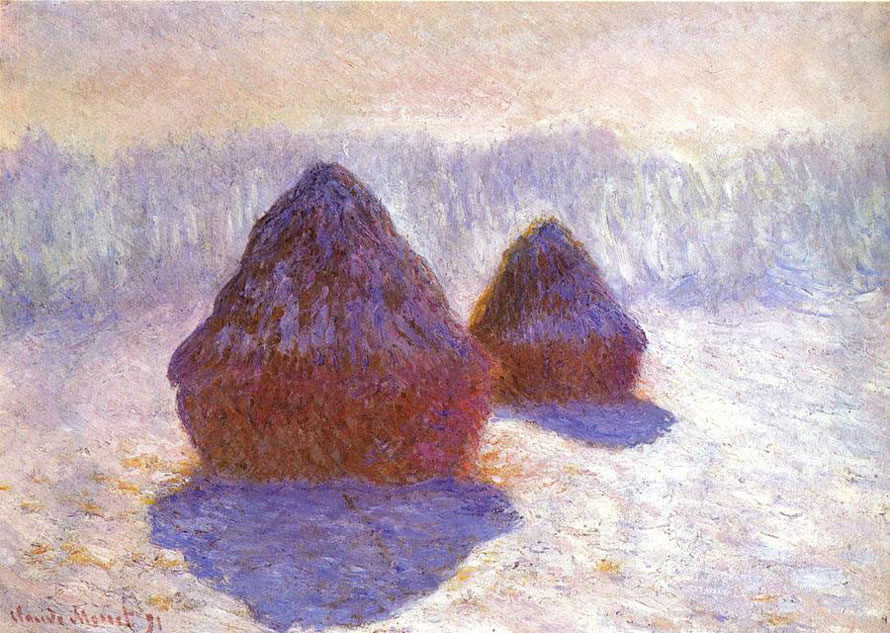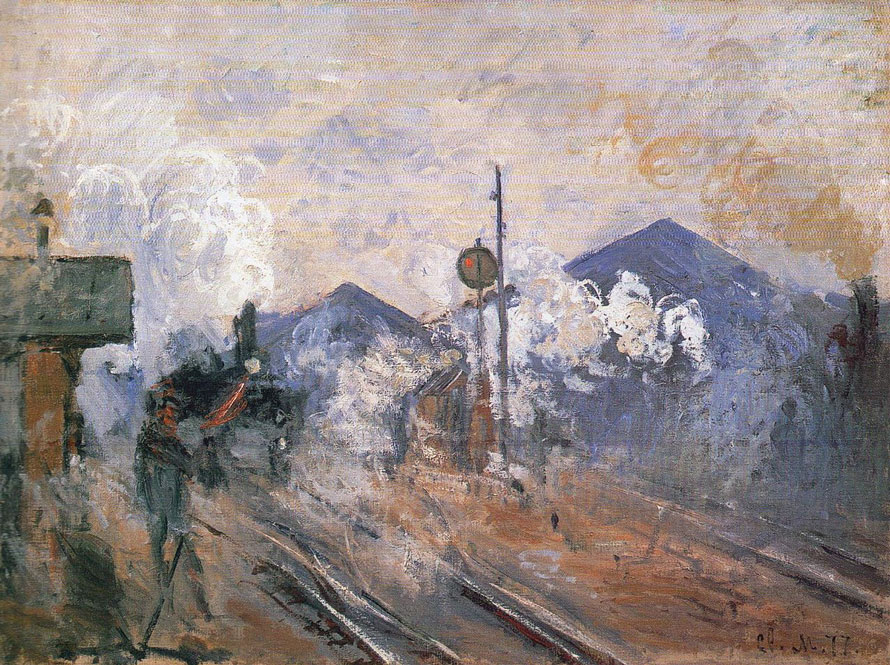Haystacks

You may be wondering what haystacks have to do with railroads and photography. I am going to get to that, but first let me explain how I think that looking at a wide variety of art and artists can bring new ideas and spark creativity in our own work. As photographers, we often become mildly obsessed with the latest gear and techniques that promise to “level up” our photography.
There is nothing wrong with gear and technique. They are essential to our craft, but they are only part of the picture. As we educate ourselves about the craft of photography, we must not neglect to train our eyes. We can do that not only by studying the work of other photographers, but also by looking at and learning from all the visual arts. Stepping outside the world of railroad photography, our visual sensibility is enhanced when we see the world through the eyes of artists working in different media. I love to look at and study the work of the great railroad photographers, but I also explore and learn from the work of “non-railroad” photographers and other visual artists. Learning to see is a lifelong journey.
For me a landscape hardly exists at all as a landscape, because its appearance is constantly changing; but it lives by virtue of its surroundings, the air and the light which vary continually.”Claude Monet
About those haystacks.
Claude Monet was a French Impressionist painter who lived from 1840 to 1926. In 1890, Monet arranged to have the haystacks near his home in Giverny, France, left in the field over the winter so he could paint them in a variety of weather conditions, different seasons, changing light, and various times of day. Between 1890 and 1891, he produced some thirty paintings of the mundane haystacks.
One of the lessons to be drawn from this body of work is how carefully Monet observed the subject and how it “lives by virtue of its surroundings.”
How does this apply to railroad photography? It inspires me to find a familiar and everyday railroad subject near where I live, and attempt to photograph it under all the varying conditions that time and weather offer up. I may not be able to achieve thirty successful photographs, but the project will certainly sharpen my ability to interpret an unchanging subject in an ever changing environment, and, perhaps lead me to see my own photography with fresh eyes.

Edd Fuller, Editor
What a thoughtful and inspirational essay this is. Appearing, as it does just after the fascinating Michael Froio interview, it reinforces the principle that photography of any kind begins with looking. Michael Froio cites the importance of understanding the land. Edd Fuller urges us to spend time with other media and other art forms. He also challenges us to be like Monet and spend time, lots of time, in every weather and every season to give greater depth and meaning to the art we strive to create. Challenge accepted!